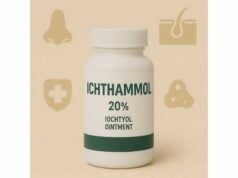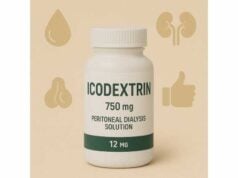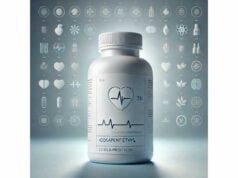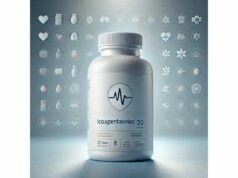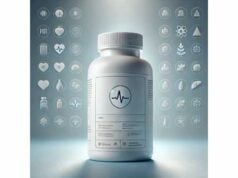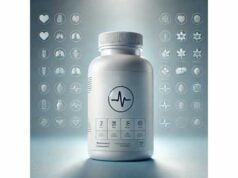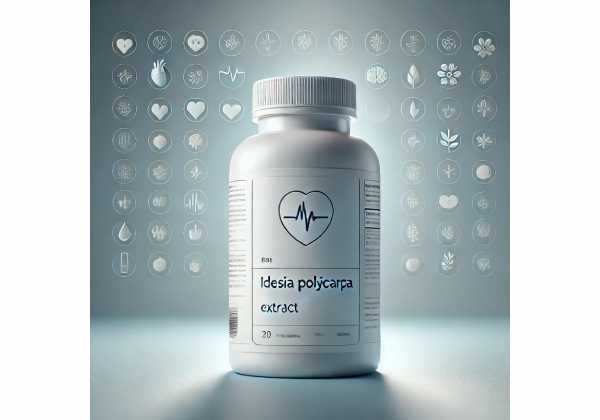
Idesia polycarpa is a deciduous tree native to East Asia whose vividly colored fruits yield an oil and extract rich in unsaturated fatty acids and plant polyphenols. In recent years, researchers have taken a closer look at this lesser-known species as a potential functional ingredient: the seed (or pulp) oil contains linoleic-dominant triacylglycerols, tocopherols, and phytosterols, while fruit and leaf extracts provide phenolic compounds with measurable antioxidant effects in laboratory models. Although you will now find “Idesia polycarpa extract” on some product labels—especially in blends aimed at metabolic wellness—human data remain limited. This guide summarizes what is known so far, where the evidence is strongest, how the extract is typically prepared or used, what reasonable dosing looks like when formal guidance is lacking, and how to use it safely. The goal: help you decide whether Idesia belongs in your routine, and how to evaluate quality if you go ahead.
Quick Overview
- Antioxidant-rich fruit extracts and seed oil support oxidative balance in vitro and in animal models.
- Oil from the pulp or seed is high in linoleic acid, tocopherols, and β-sitosterol that may aid lipid management.
- Typical exploratory use: 500–1,000 mg/day of standardized extract, or 1–2 teaspoons/day of culinary oil.
- Avoid if you are pregnant, nursing, allergic to Idesia species, or taking anticoagulants without medical guidance.
Table of Contents
- What is Idesia polycarpa extract?
- Does it work? Key benefits
- How to use: forms and preparation
- How much should you take?
- Safety, risks, and who should avoid
- What the research says today
What is Idesia polycarpa extract?
Idesia polycarpa (sometimes called the Idesia tree) grows across parts of China, Korea, and Japan. The tree produces clusters of orange-to-red fruits whose soft pulp surrounds an oil-rich seed. Traditional uses focus on the oil as a lamp or culinary fat in some local contexts and the leaves or fruits as a minor folk remedy. Modern interest centers on two components:
- Idesia polycarpa oil (IPO or IPPO): pressed from the fruit pulp and/or seed. It is typically linoleic-acid dominant (an omega-6 fatty acid), and naturally provides tocopherols (vitamin E forms) and phytosterols such as β-sitosterol. These constituents are widely studied in other edible oils for their roles in lipid metabolism and antioxidant protection.
- Idesia polycarpa extract: usually a hydroalcoholic extract of fruit or leaves that concentrates phenolic compounds (for example, idesin derivatives and other phenolic glycosides). In cell and animal models, such compounds often show antioxidant and anti-inflammatory activity.
Commercially, you may see Idesia polycarpa as:
- a standalone softgel containing the oil;
- a capsule of standardized extract (fruit or leaf) labeled for antioxidant or metabolic support;
- a blend with other botanicals (green tea catechins, tocotrienols, or sterol mixes).
Because Idesia is not yet a mainstream commodity oil, quality varies. Authentic products disclose botanical identification (genus, species, and plant part), extraction solvent (e.g., ethanol-water), and a specification for active markers (e.g., total polyphenols in mg/g, or tocopherols and phytosterols in the oil).
From a practical standpoint, it helps to think of Idesia in two lanes. The oil behaves like a specialty edible oil that can complement existing fats in the diet. The extract behaves like a botanical antioxidant supplement where dose is measured in milligrams and standardization matters. Your use case—culinary diversification vs. targeted supplementation—should guide which lane you choose.
Does it work? Key benefits
Antioxidant support. Fruit and leaf extracts rich in phenolics have repeatedly demonstrated free-radical scavenging capacity and protection of lipids from peroxidation in test systems. In liver cell models, phenolic extracts reduced intracellular triglyceride accumulation under metabolic stress. In animals, oil or extract exposure often raises endogenous antioxidant enzymes, although protocols and preparations differ among studies. While such findings do not prove clinical benefit, they do suggest a plausible mechanism by which Idesia could support oxidative balance when included as part of a varied diet or a standardized supplement.
Lipid-related properties. The oil’s composition—high linoleic acid, tocopherols (notably α- and β-tocopherol), and β-sitosterol—is consistent with a lipid-friendly profile. In vitro digestion models show robust free-fatty-acid release from Idesia oil emulsions, and compositional surveys find a favorable unsaturated fat profile with meaningful levels of natural antioxidants. Together, these features align with oils commonly explored for cholesterol and triglyceride management when used to replace more saturated fats in meals.
Anti-inflammatory signaling (preclinical). Several phenolic glycosides isolated from Idesia fruits inhibit nitric-oxide production in activated microglial cells in culture—an effect often interpreted as anti-inflammatory activity in a neuroimmune model. Again, that is a laboratory signal, not a clinical claim, but it adds mechanistic texture to the antioxidant story.
Culinary versatility. As an edible oil, Idesia’s neutral-to-nutty character and fluidity make it workable in salad dressings, cold dishes, or low-to-moderate heat sautéing. In this culinary role, it functions less as a “supplement” and more as a dietary ingredient that carries tocopherols and phytosterols into everyday meals.
What is not established yet. There are no large, well-controlled human trials demonstrating outcomes such as lower LDL-C, improved NAFLD markers, or reduced inflammatory biomarkers with Idesia extract or oil. Evidence today is preclinical or analytical. That means benefits are plausible and biochemically supported, but not confirmed in people.
How to use: forms and preparation
If you decide to experiment with Idesia, begin by choosing the format that matches your goal and your tolerance for change:
1) Culinary oil (pulp or seed).
- Best for: gently displacing saturated fats in salads and cold dishes while adding tocopherols and phytosterols.
- How to use: stir into vinaigrettes; drizzle over cooked grains or vegetables; fold into hummus or yogurt-based dips.
- Cooking note: treat it like other delicate, unsaturated oils—prefer no-heat or low-heat applications. If you cook with it, keep temperatures modest and avoid repeat high-heat frying to protect sensitive fatty acids.
- Storage: use a dark bottle, limit light and air exposure, and consume within a few months of opening to minimize oxidation.
2) Standardized fruit or leaf extract (capsules/powder).
- Best for: concentrated phenolic intake where culinary use is impractical.
- Label reading: seek products that specify the plant part (fruit vs. leaf), extraction solvent (e.g., ethanol-water), and standardized markers (e.g., “≥ 30% total polyphenols, as gallic-acid equivalents”).
- Stacking strategy: consider pairing with dietary patterns known to be heart-healthy—rich in vegetables, legumes, whole grains, and marine omega-3s—rather than stacking many botanicals that duplicate antioxidant actions.
3) Blends with sterols, tocopherols, or tea catechins.
- Best for: a “broad-spectrum” lipid-support formula.
- Caution: blends can complicate dosing and raise interaction risk (e.g., sterols may affect fat-soluble vitamin absorption; high-dose vitamin E can interact with anticoagulants). Be sure each component and dose makes sense for you.
Quality checkpoints.
- Origin and traceability: reputable brands disclose growing region and processing steps.
- Per-lot testing: ask for third-party certificates showing peroxide value/anisidine value (for oils), heavy metals, solvent residues, and microbial counts.
- Sensory cues (oil): fresh Idesia oil should smell clean and mildly nutty; rancid, paint-like, or fishy aromas suggest oxidation.
Practical pairing ideas.
- Combine 1 teaspoon of Idesia oil with lemon juice, mustard, and herbs for a simple dressing.
- Blend a standardized extract powder into a smoothie with a fat source (e.g., yogurt or nut butter) if your product’s instructions allow; many phenolics disperse better with a little dietary fat.
How much should you take?
Because there is no established clinical dose for Idesia polycarpa in humans, any guidance here is practical and conservative:
Extract (capsules or powder).
- A reasonable exploratory range is 500–1,000 mg/day of a standardized fruit or leaf extract, taken with food. Divide into two doses if you notice any stomach upset.
- If the label expresses strength as “mg of total polyphenols”, aim for 150–300 mg/day of total polyphenols within that 500–1,000 mg extract intake. This aligns with common practice for other phenolic-rich botanical extracts where human data are still emerging.
- Start low (e.g., 250–500 mg/day) for a week, then adjust.
Culinary oil.
- As a dietary fat, think in teaspoons to tablespoons, not milligram capsules. 1–2 teaspoons/day (about 5–10 mL) folded into meals is a practical starting point for most adults.
- Use Idesia oil to replace, not add to, less desirable fats. A swap is more meaningful for lipid management than simply increasing total fat intake.
Timing and duration.
- Take extracts with a meal that includes some fat to enhance absorption of lipophilic compounds.
- Evaluate your experience over 4–8 weeks. Because outcomes like skin radiance or general vitality are subjective, focus on tolerability and alignment with your goals (e.g., better diet patterns), rather than expecting dramatic biomarker changes.
Who needs stricter medical supervision?
- Individuals with dyslipidemia, fatty liver disease, bleeding risks, or multiple medications should discuss Idesia with a clinician. If you already use plant sterol supplements or high-dose vitamin E, an Idesia oil that also supplies sterols/tocopherols could overlap.
What to avoid in dosing.
- Megadoses that exceed 1,000–1,500 mg/day of extract without medical oversight.
- Heating the oil to high temperatures, which defeats the purpose of using a delicate, unsaturated oil in the first place.
Safety, risks, and who should avoid
General tolerance. Culinary use of plant oils with similar profiles is common, and no widespread adverse-event pattern for Idesia has been documented. That said, absence of evidence is not the same as proof of safety. Treat Idesia as an emerging food ingredient with limited clinical surveillance.
Potential side effects.
- Digestive upset (nausea, loose stools) may occur when starting a new oil or concentrated extract, especially on an empty stomach.
- Allergy is possible with any plant product. Discontinue if you notice rash, itch, swelling, or breathing difficulty, and seek care.
- Headache or jitteriness is uncommon but can appear in sensitive individuals trying polyphenol-dense products; lowering the dose often helps.
Interactions.
- Anticoagulants and antiplatelets: Oils rich in unsaturated fatty acids and extracts with high phenolic content can, in theory, modestly influence bleeding risk at higher intakes or when combined with other agents that affect hemostasis. Coordinate with your care team.
- Fat-soluble vitamins: High intakes of phytosterols can reduce absorption of vitamins A, D, E, and K. In practical culinary amounts this is unlikely to matter, but be mindful if you use sterol-fortified products alongside Idesia oil.
- Hepatic conditions or enzyme-altering drugs: Because some Idesia investigations focus on liver models, people with active liver disease or complex regimens should proceed carefully and monitor for changes.
Populations that should avoid or seek medical advice first.
- Pregnant or breastfeeding individuals: lack of safety data—avoid supplementation.
- Children: not recommended due to insufficient data.
- Individuals with plant-oil allergies or prior reactions to Idesia species.
- People scheduled for surgery: stop supplemental extracts 2 weeks prior, unless your surgeon advises otherwise.
Product safety tips.
- Prefer brands that publish peroxide value (PV) and p-anisidine value (AnV) for the oil (lower is fresher), and provide independent lab reports for heavy metals and microbial limits for extracts.
- Store oils cool and dark; keep extracts sealed, dry, and away from heat.
Bottom line: used modestly in food, Idesia oil appears reasonable for most healthy adults. For extracts, cautious dosing and attention to interactions are prudent until clinical studies fill the gaps.
What the research says today
Composition and quality. Analytical work from multiple groups consistently shows that Idesia oil is rich in unsaturated fatty acids, with linoleic acid predominating, and carries tocopherols and β-sitosterol at nutritionally relevant levels. Comparative surveys across different regions have documented geographical variation in volatile compounds and antioxidant capacity, which matters for flavor, stability, and potential bioactivity. These data underpin the advice to buy traceable lots and to look for freshness metrics on the label.
Digestive behavior. In vitro digestion models indicate that Idesia oil emulsions exhibit robust free-fatty-acid release (approaching or exceeding 85% in some protocols) and tend to release a larger share of unsaturated fatty acids. While in vitro kinetics do not equal human absorption, the pattern supports culinary positioning as a digestible, unsaturated oil.
Antioxidant and metabolic signaling.
- Phenolic extracts from Idesia fruits have shown antioxidant capacity and lipid-lowering effects in hepatocyte models under steatotic conditions. These models demonstrate reduced intracellular lipid accumulation and improved redox markers after exposure to the extract.
- Isolated phenolic glycosides can suppress nitric-oxide production in stimulated microglia, a cellular surrogate for anti-inflammatory signaling.
- Some research teams have explored specific phenylpropanoid glycoside fractions and found reductions in circulating triglycerides and improvements in antioxidant enzymes in rodent settings, though protocols vary and translation to people is unknown.
What is missing.
- Randomized controlled trials in humans assessing lipid panels, liver enzymes, or inflammatory biomarkers.
- Standardized dosing frameworks that correlate milligram amounts of extract with defined polyphenol content and clinical endpoints.
- Long-term safety data for daily supplement use beyond culinary intakes.
Practical interpretation. Idesia polycarpa extract and oil currently sit in the “promising but early” category. If you enjoy experimenting with specialty oils and carefully labeled botanical extracts, there is enough laboratory and analytical evidence to justify a cautious trial, provided you respect the safety guidance above. If you are seeking clinically proven outcomes, you may prefer established options (for example, high-oleic edible oils for culinary patterns, or sterol-standardized foods under medical supervision) while keeping an eye on future Idesia trials.
References
- Antioxidant activity of Idesia polycarpa phenolic extract and its lipid-lowering effect in hepatocyte cells 2020 (Preclinical)
- Chemical Composition, NMR and Antioxidant Activity of Idesia polycarpa Maxim. var. vestita Diels Fruit Oil and the Proposed Structure Identification of Main Antioxidant 2023
- A comprehensive study on physicochemical properties and digestive kinetics of Idesia polycarpa oil and emulsion 2023
- Quality analysis of Idesia polycarpa fruit oil samples from five regions of China using gas chromatography-ion mobility spectrometry 2024
Disclaimer
This article is for educational purposes only. It is not a substitute for personalized medical advice, diagnosis, or treatment. Always speak with your qualified health professional before starting, stopping, or changing any supplement, oil, or dietary regimen—especially if you have medical conditions, take prescription medications, are pregnant, or are breastfeeding.
If you found this guide helpful, please consider sharing it with a friend or colleague on Facebook, X (formerly Twitter), or your favorite platform, and follow us for future updates. Your support helps us keep creating clear, useful health content.

